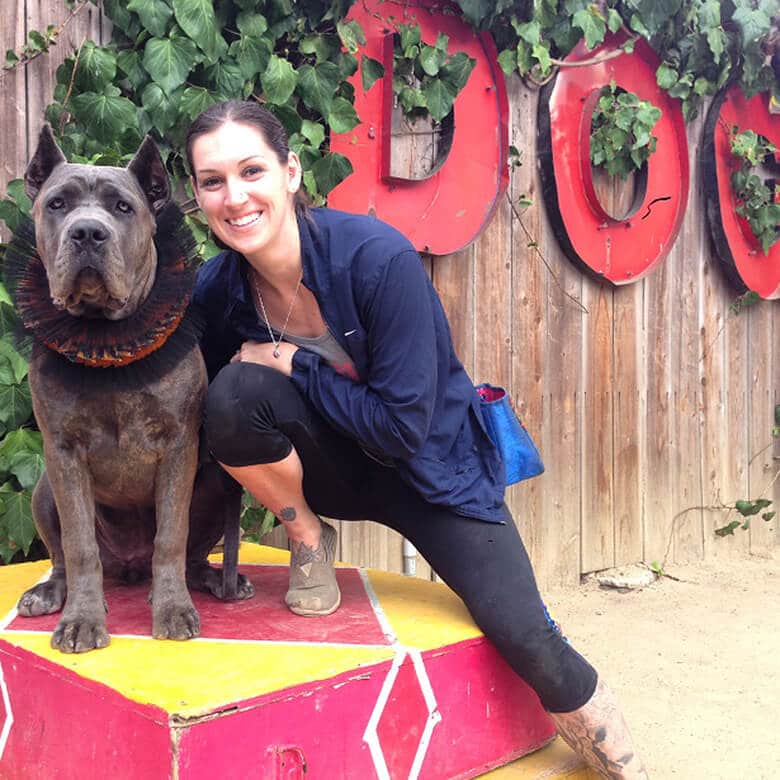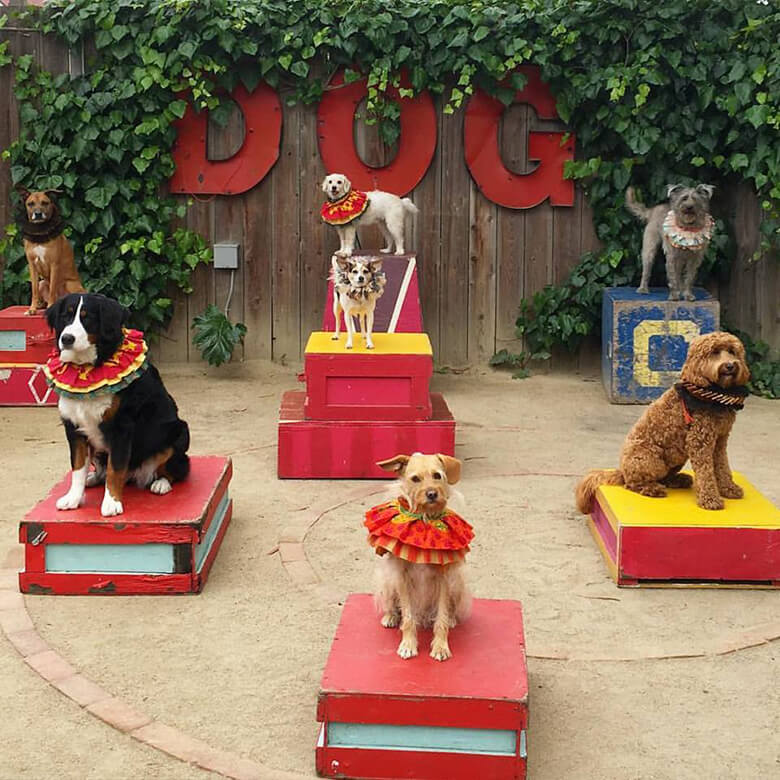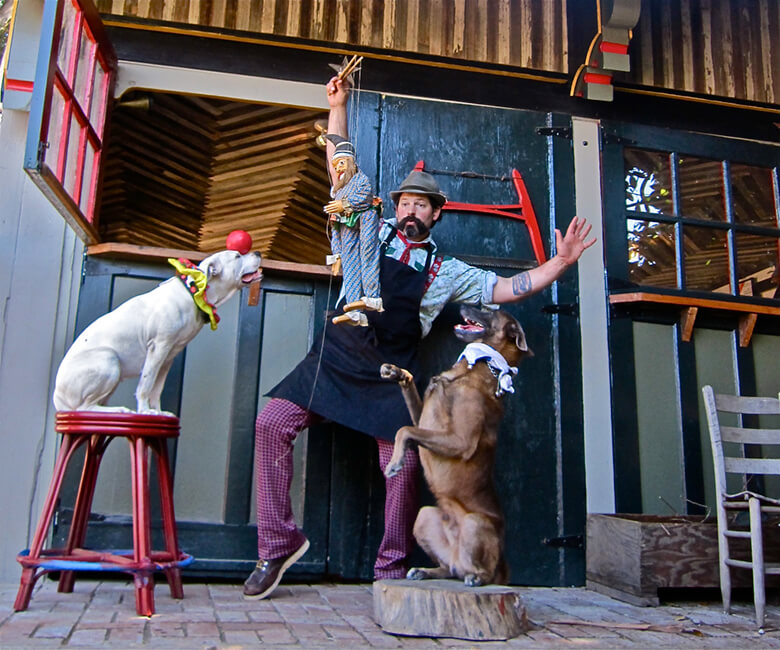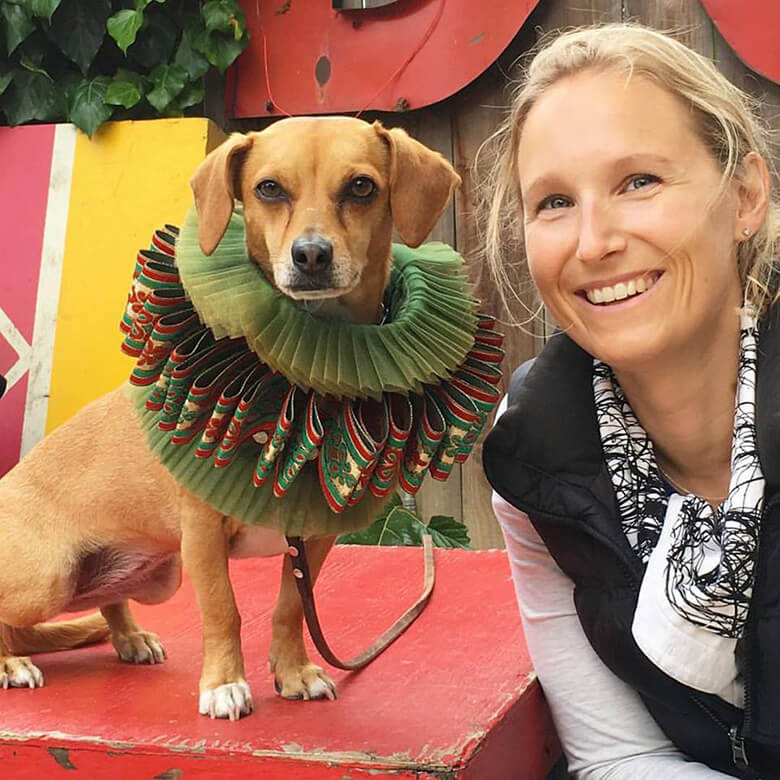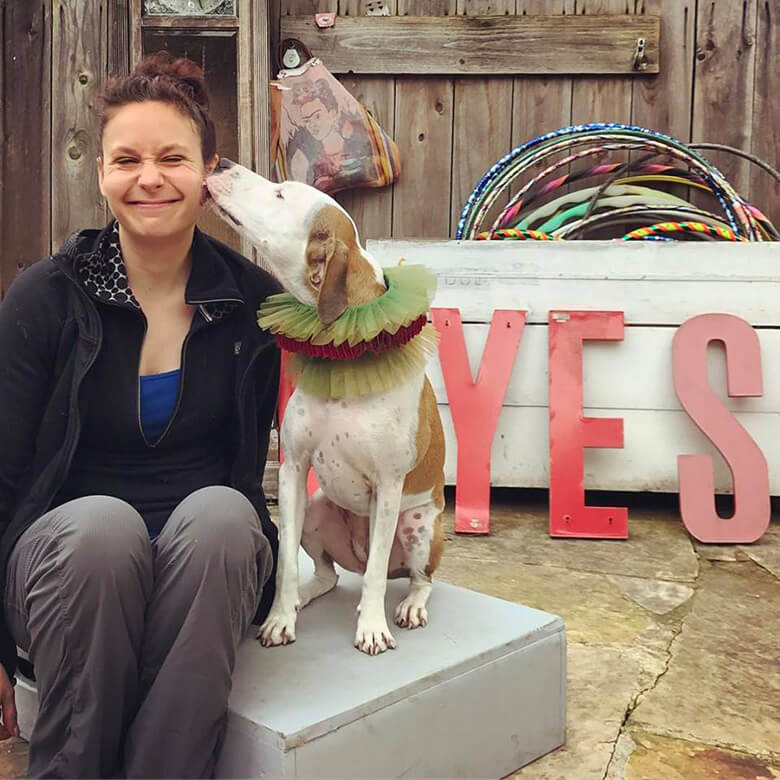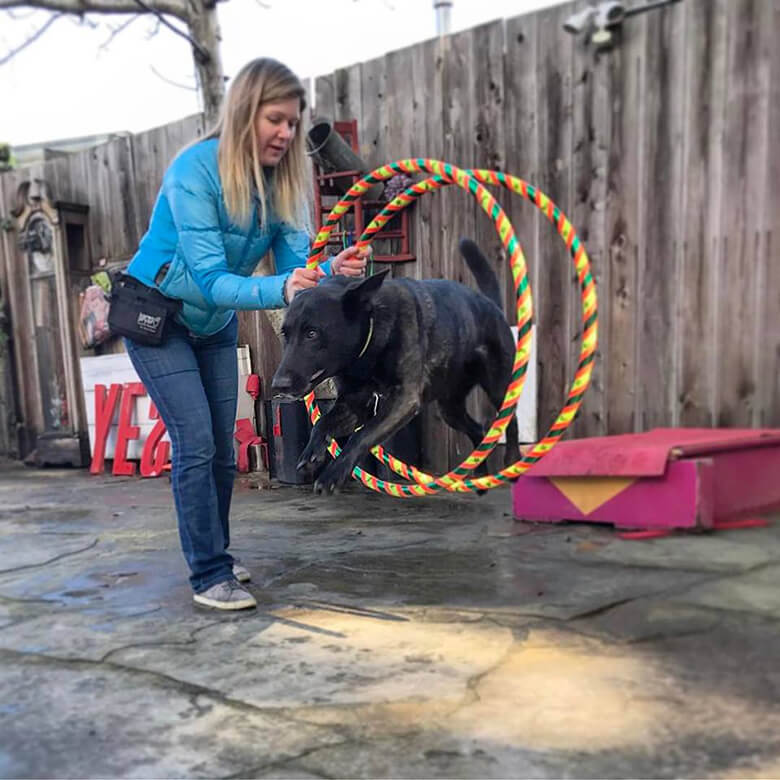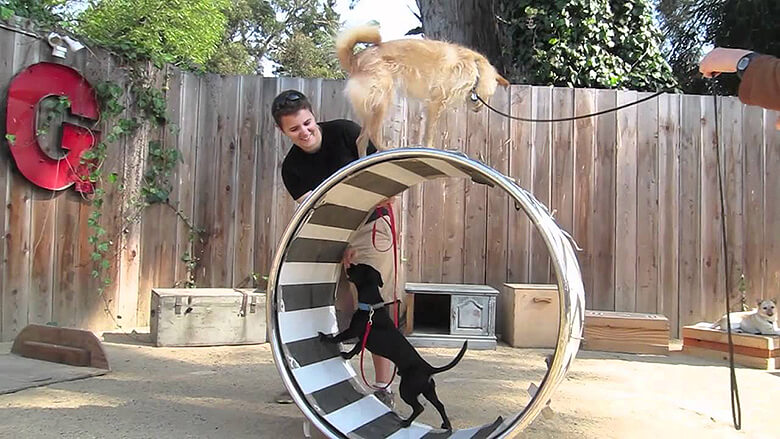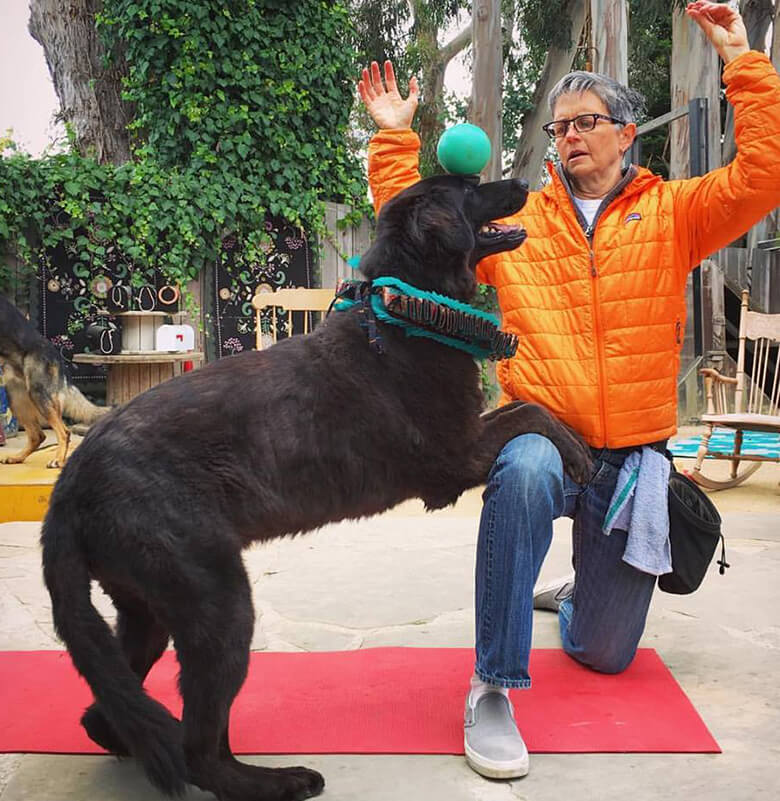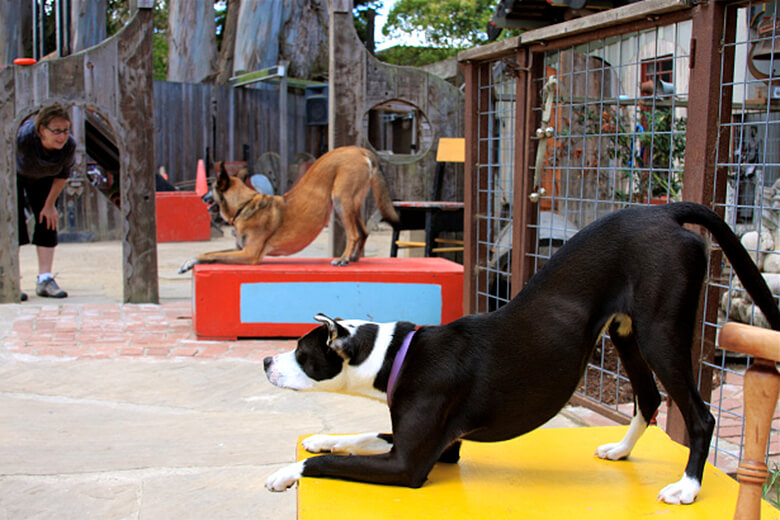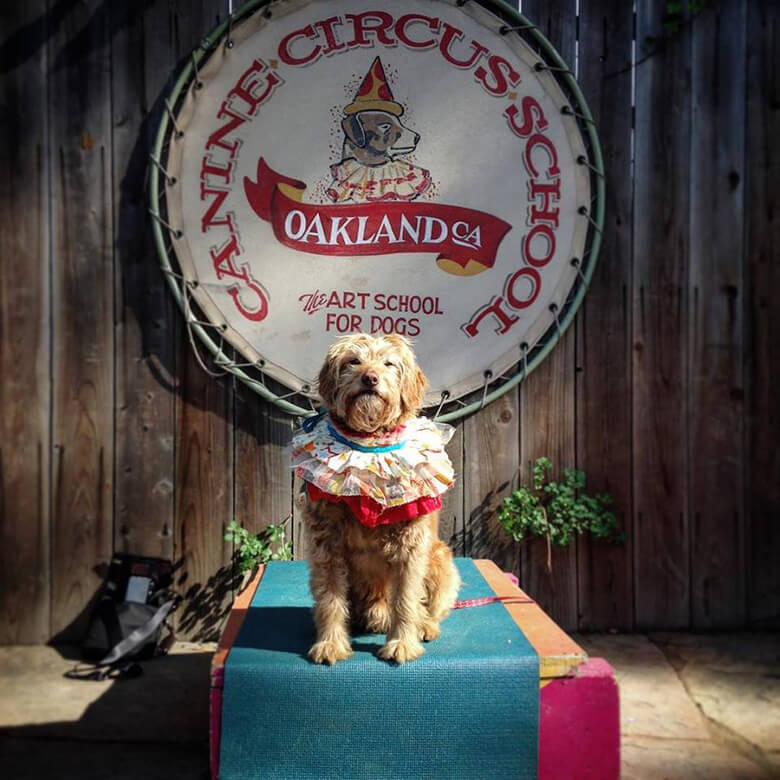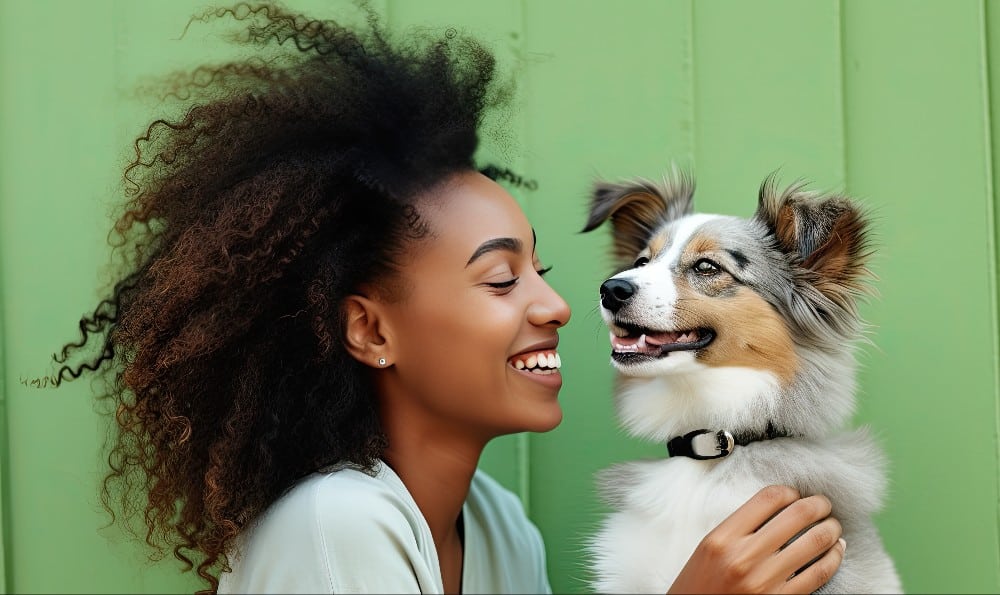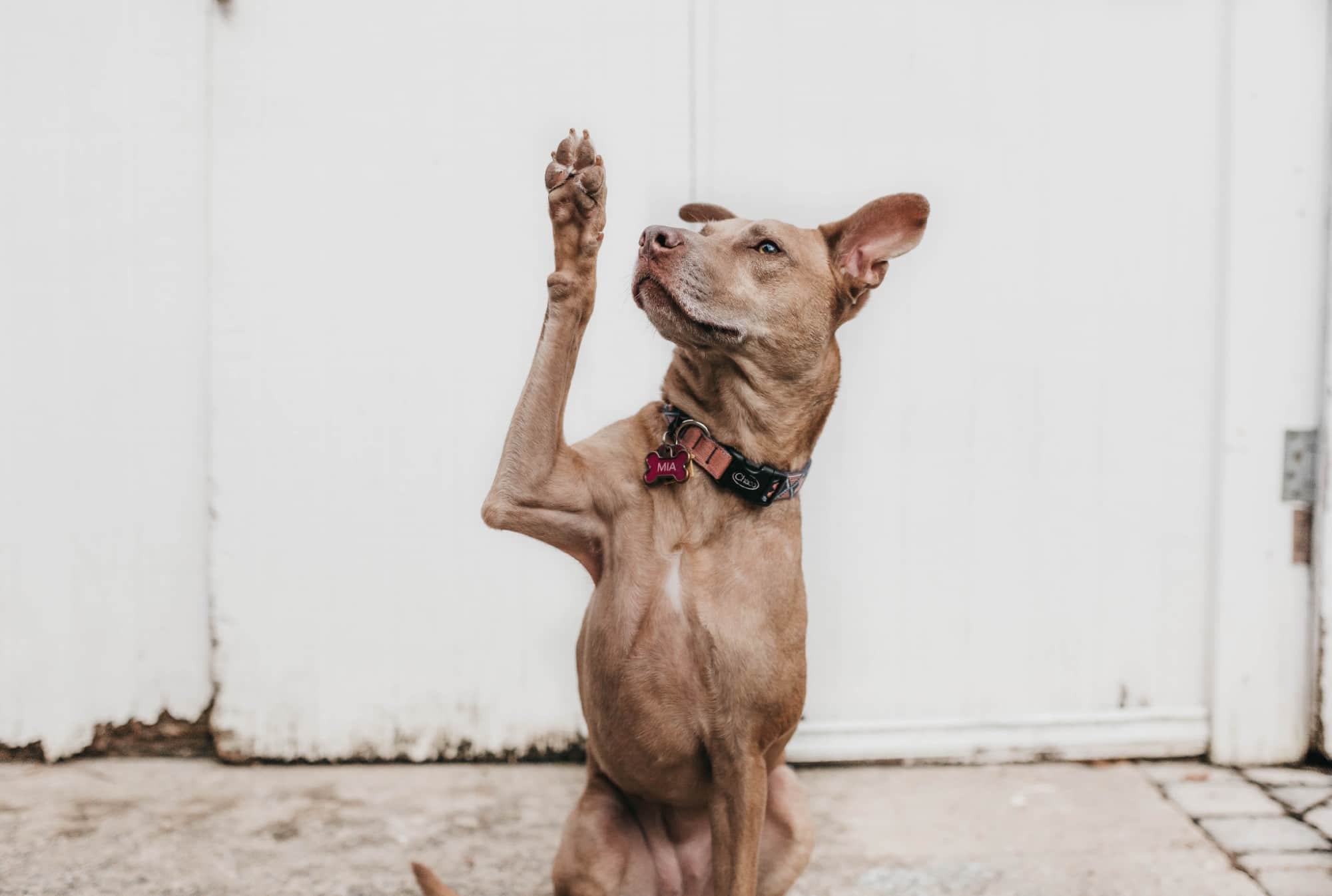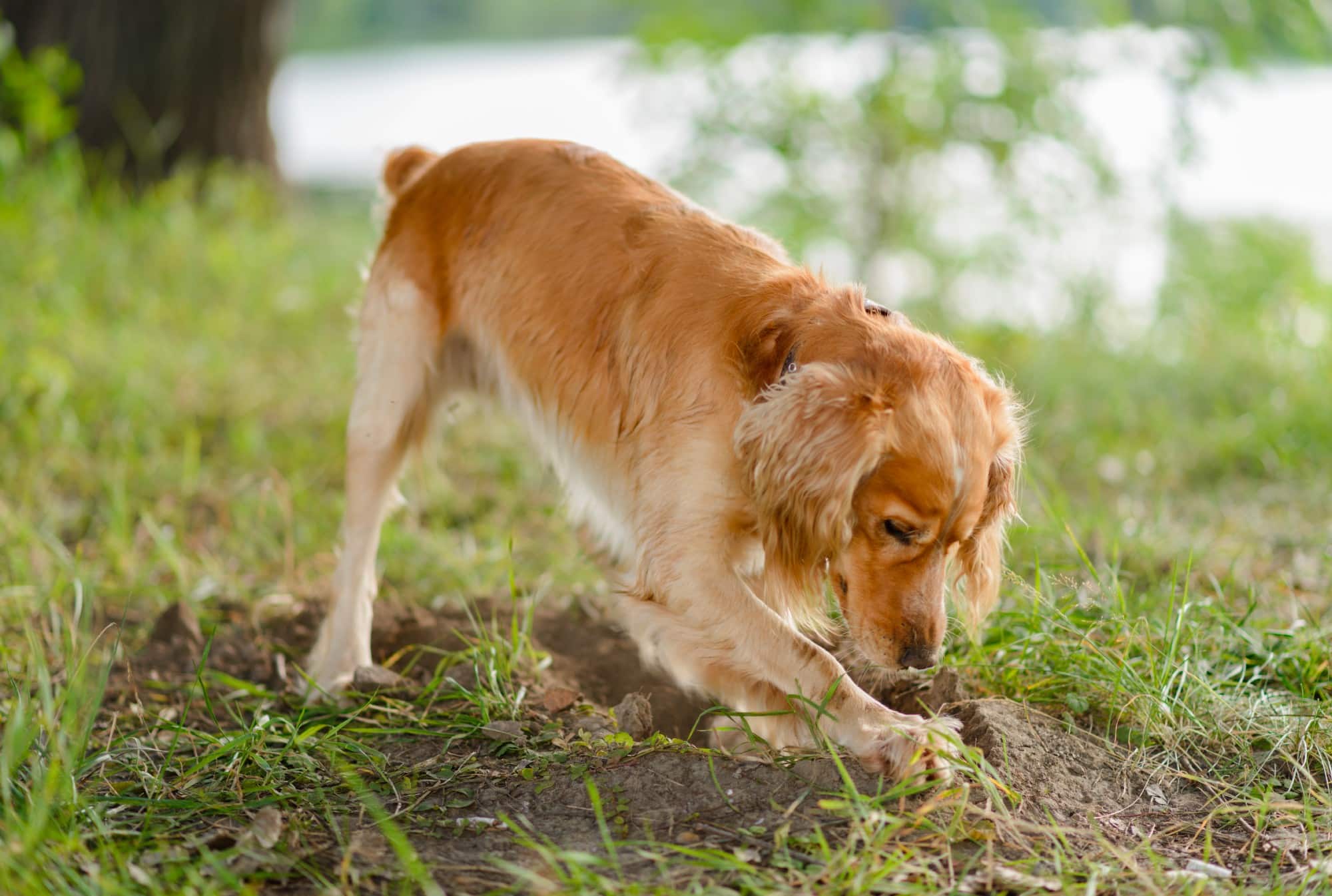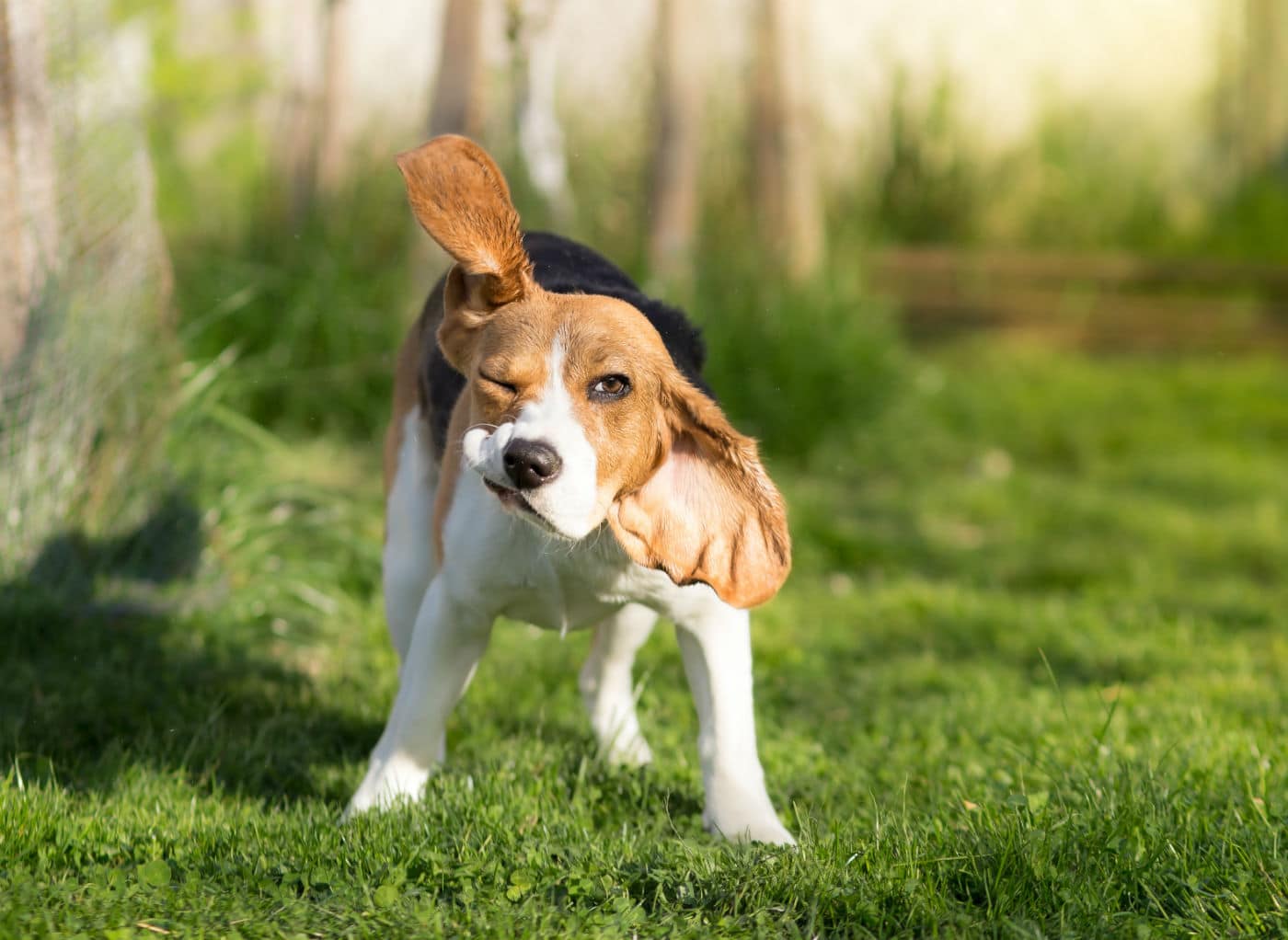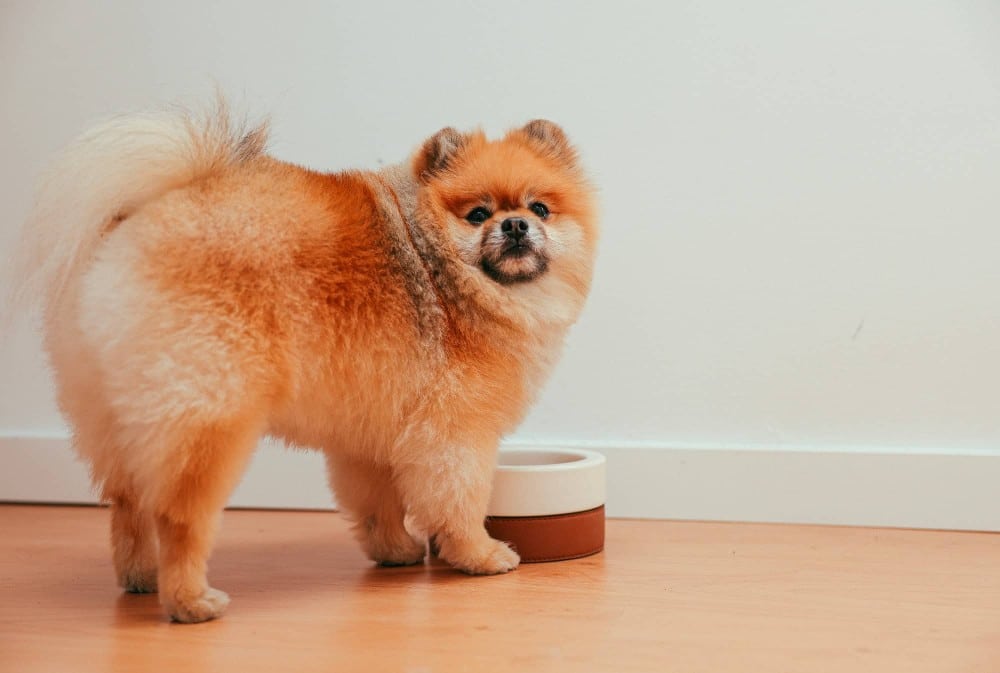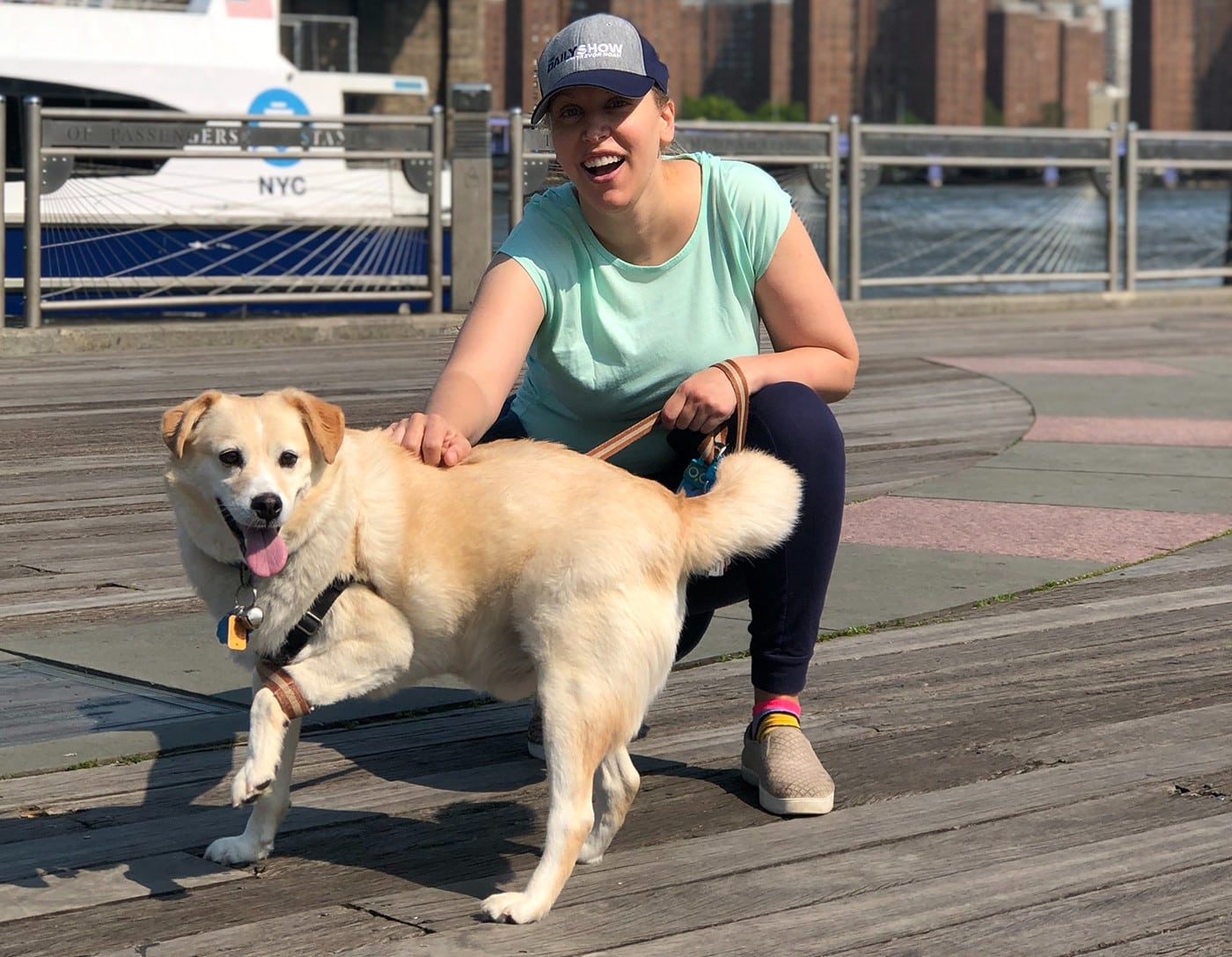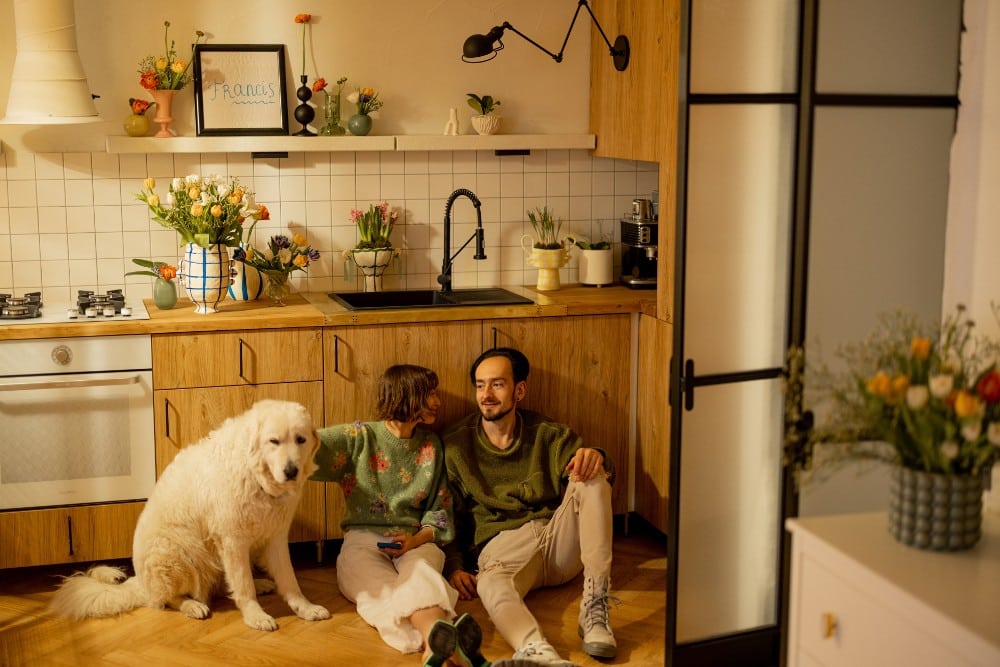German shepherds leaping nimbly through hoops, pit bulls balancing balls on their noses, mutts of every shape and size learning to put on a show. This is just a typical day at the Canine Circus School in San Francisco, where “clowning around” helps dogs learn new tricks, while gaining confidence.
The Canine Circus School (CCS) is a place where humans and their pups are guided to pursue their unique talents, then take those newly developed skills into the world and add some enchantment to the daily grind.
Husband and wife team Francis and Norma Metcalf, trainer extraordinaire and headmaster, respectively, are the ringleaders of this lively academy. Strolling amid his pooch performers-in-training and their human sidekicks, Francis demonstrates skills and offers guidance as dog-and-human duos practice each task — gaining confidence with each attempt, gradually perfecting lively tricks and adding to their repertoire.
Related: Dharma Rescue Gives New Purpose to Disabled Dogs Saved From Death Row
With any circus, there’s lots of Vaudeville schtick, with dogs wearing bright ruffled collars, along with props abound, from bright rubber balls to colorful hoops to stagey platforms of many shapes and sizes.
Regardless all the exciting distraction, pup participants demonstrate incredible focus.
Related: Woman Does Pole Dancing Routine With Her Dog
“Our goal is to teach each of our students to make their dog the coolest dog on their block,” Francis tells This Dog’s Life of the 6-year-old school’s mission.
While the tricks taught are suitable for the big top, students here aren’t actually being groomed for professional circus work. The circus theme is more a metaphor for the type of environment the school has created: a nonconformist culture that encourages dogs’ wide-ranging learning styles and preferences.
“The circus has so many archetypes associated with it,” says Francis. “You could be a bearded lady, tattooed man, lithe acrobat or complete clown; the circus is cool with it.”
Dogs (and handlers) of every age, type and ability level are welcome. Beginning class, Circus 1, focuses on obedience and basic tricks, with each successive course introducing more complex movements and tasks, sharpening skills from focus to agility. By intermediate courses, dog and handler learn to build their own routines. Students who progress to Circus 4, the most advanced section offered, work with props and customize their tricks with improvisation. From conquering hoops to navigating courses of cones, steadying balls on the snout to developing signature bows, the canines steadily add to their routines. Even Circus 1 dogs can confidently perform delicate spins while standing on their hind legs. Francis likens the fast and focused pace to martial arts classes.
Related: You Can Stop Spending Money on Treats: Dogs Likes Praise Just as Much as Food
“The predictability of the forms allows people to feel a sense of ease, but the incremental challenges keep them engaged,” he says. “Every routine is balanced between repetition and variation so that the human and dog do not get bored.”
In one highly advanced routine, one dog stands inside a large hollow cylinder the shape of a bass drum, rolling carefully forward. Meanwhile, a nimble hound perches atop the rolling cylinder, carefully moving his paws to keep balance while his human carefully directs him by the leash.
The intimate class sizes — eight dogs per session — ensure individualized attention, and pups are encouraged to work at their own pace. About 30 percent of students work through the entire program. Students who retake a course even receive a discount. For new students, per-course tuition is $260. Returning participants pay $195.
Dog owners love the connection they make with their fur-kid throughout their courses while pups enjoy the positive stimulation of learning new skills and being praised by their people.
While getting famous isn’t the major goal at CCS, some canine graduates have pursued stardom. Most recently, Buddy the beagle worked in a promo video for insurance technology company CoverHound. Faith and her terrier, Annie Oakley give party performances with miniature ponies. The Metcalfs’ own pooch, Chomsky, has worked in film, including a role in the movie Sniff.
Related: Program Gives Stray Dogs a Second Chance by Turning Them Into Police K9 Rock Stars
Most importantly, instruction is designed with the health, safety, and emotional balance of the canine foremost in mind.
One example is teaching the play bow. “In dog body language, [the bow] is an invitation to play,” Francis says. “When you train a dog to do it, it’s kind of like smiling when you’re sad. Plus it stretches and strengthens — like pilates for dogs.”
The curriculum is designed to complement a range of dog sports, everything from dock diving to Treibball (herding large balls), among others.
“We understand dog sports and have built our lessons to work with, not against, sport training,” says Francis.
But of course, your pup needn’t be an athlete to become a circus school star. At CCS, the real joy lies in helping all dogs to achieve happiness and self-assurance. Shy mutts blossom into friendly, sociable companions. Stiff, overweight old-timers grow more limber.
For Francis, one of the most meaningful accomplishments of CCS has been training dogs “that have come through our gates shaking with nerves only to not want to leave once we put their street smarts to work and teach the handler how to build trust.”
And now that is true magic.
Related: For Training, This Surfer Gets Dogs Out of the Classrooms and Onto Paddleboards













